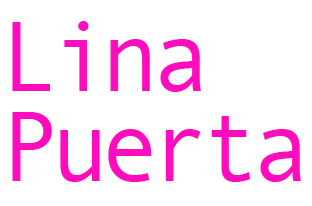Statement
My work draws from my experience as a Colombian-American artist, examining the relationship between nature and the human-made, and engaging themes of food justice, xenophobia, hyper-consumerism, and ancestral knowledge. I create mixed media sculptures, installations, collages, handmade-paper paintings and wall hangings by combining a wide range of materials, from artificial plants and paper pulp to found, personal and recycled objects. I start a work with concept in mind, but at the actual time of making, I manipulate materials intuitively, responding to the juxtaposition of colors and textures. Experimentation and layering are key to my practice, as I push and play with materials and mediums.
In my early work, I was interested in the female body and seeing it through the lens of nature, free of religious taboos and hypersexualization. These ideas manifested as sculptures of anatomical and botanical hybrids, highlighting their functions and intelligence as wondrous, spiritual and magical. I then began the Botánico Series in 2010 to explore the tension between the human and botanical worlds. Deconstructing the human control exemplified by artificial plants, I reassembled them to mimic the resilience and seeming chaos of wild plants, sometimes erupting from the gallery walls themselves. At other times I made “contained” works inside suitcases or bell jars that are small ecosystems just like our own bodies. These incorporate lace, sequined fabrics, and jewelry to reference the body, as we are also part of nature and need to reconnect with the celebratory aspect inherent in both nature and ourselves. My next series Traces further examined urban landscapes themselves as a collective body, incorporating concrete and tiled surfaces as they evolve with the passing of time.
In 2016 through an artist residency with Dieu Donné, I began experimenting with handmade paper-making, developing a way of layering pigmented paper pulp with various patterned and textured fabrics and then sculpting the surface with water and stencils. Utilizing these techniques, I created the Latinx Farmworkers in the US Tapestries Series (2017) which highlighted the extreme physical labor and hardship demanded by exploitative industrial agricultural systems, contrasted against the poetic life cycle of the crops themselves. This naturally evolved into the Willard Crops Series of paper collages, in which I turned my focus to the crops, which like the workers who tended them, were subject to pesticides and chemical inputs to maximize profits. Imagining a solidarity between plants and workers, I pushed the sensual and joyous possibilities of the various materials’ forms to create vibrant vegetable portraits to honor the farmworkers for their unsung dedication to plant well-being.
In the midst of the coronavirus pandemic, I began the Kinship Series of paper works that emerge from a personal process of reaching out for connection to ancestral indigenous knowledge that inspires a new relationship with plants—not only to the food or medicine they produce—but to their entire bodies and their accumulated wisdom. My most recent works move from paper to fabric, and are inspired by Indigenous weaving patterns related to food and agriculture, passed down across generations of women. I also employ the art techniques of quilting and embroidery that have been associated with domesticity and traditionally practiced together by women, under colonialism, to escape social isolation and seek mutual aid. By integrating these two aspects of my Mestiza ancestry, I seek to decolonize colonial ways of thinking and uplift undervalued knowledge, to recuperate alternative ways of living and relating that can ensure a sustainable and biodiverse future for generations to come.


